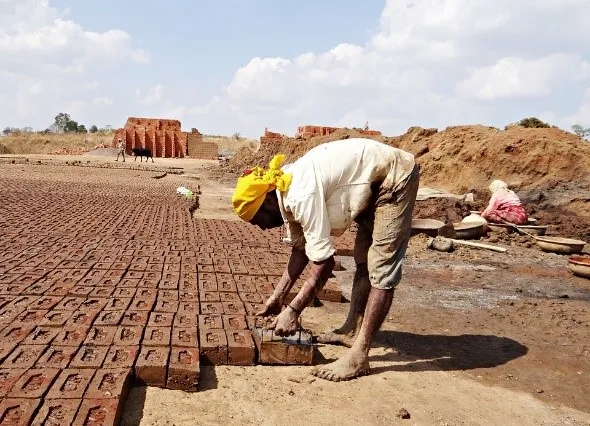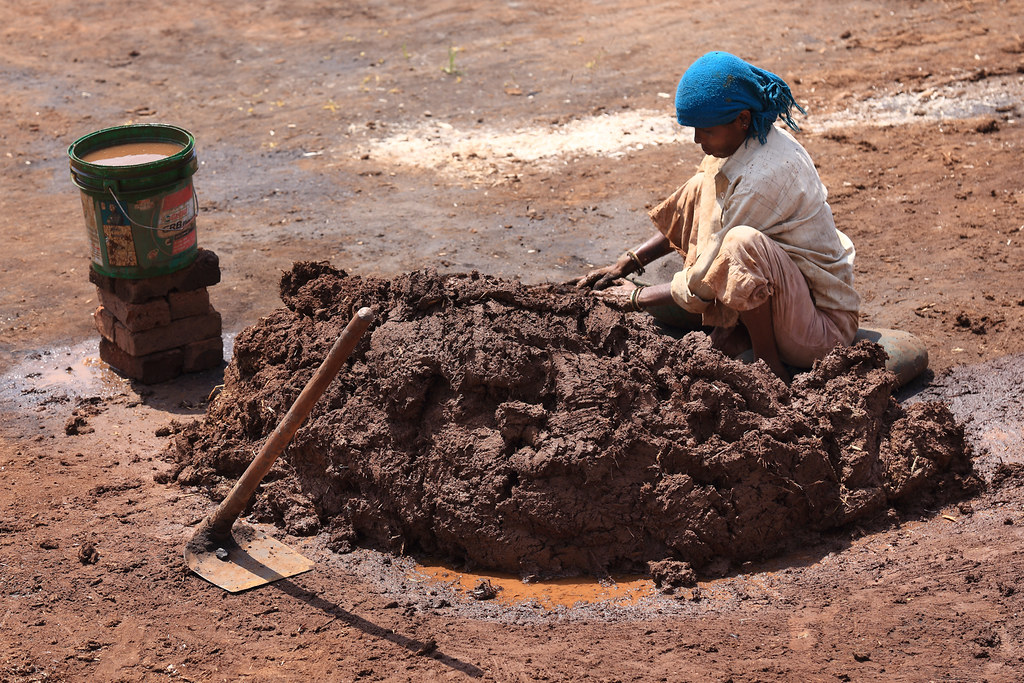Making of Bricks And Stones...!!!
Both bricks and stones are essential building materials with a wide range of applications. Understanding the production and uses of these materials helps appreciate their significance in architecture and design.

Manufacturing of Bricks
1. Raw Materials
-
Clay: The primary ingredient in brickmaking, clay can be sourced from riverbanks, quarries, or industrial byproducts.
-
Additives: Sand, lime, and ash may be added to improve the brick's texture, strength, and color.
2. Preparation of Clay
-
Excavation: Clay is extracted and transported to the brickmaking site.
-
Mixing and Tempering: The clay is mixed with water and additives to achieve the desired consistency. This process, known as tempering, ensures the mixture is free of air bubbles and has the appropriate plasticity.
3. Molding
-
Hand Molding: Traditional method where clay is shaped into bricks using wooden molds.
-
Machine Molding: Modern method using machines to press the clay into brick shapes. This approach is faster and produces uniform bricks.
4. Drying
-
Air Drying: Bricks are left to dry naturally for several days, allowing excess moisture to evaporate.
-
Artificial Drying: In industrial settings, bricks are placed in drying chambers where controlled heat speeds up the drying process.
5. Firing
-
Kiln Firing: Dried bricks are stacked in kilns and heated to high temperatures (up to 1,000°C). This process hardens the bricks and gives them their final strength and color.
-
Cooling: Once fired, bricks are left to cool gradually before being removed from the kiln.
6. Sorting and Packaging
-
Inspection: Bricks are inspected for quality and sorted based on their size, color, and strength.
-
Packaging: Bricks are bundled and packaged for transport to construction sites.
Uses of Bricks
-
Construction: Bricks are extensively used in building homes, commercial structures, and infrastructure due to their durability and strength.
-
Paving: Bricks are utilized for paving driveways, walkways, and garden paths.
-
Decorative Elements: Bricks are often used for aesthetic purposes in interior and exterior design, such as fireplaces, accent walls, and landscaping features.
Processing of Stones
1. Quarrying
-
Extraction: Stones are extracted from quarries using drilling, blasting, or cutting methods.
-
Transport: Extracted stones are transported to processing plants for further treatment.
2. Cutting and Shaping
-
Block Cutting: Large stone blocks are cut into smaller, manageable sizes using saws or wire cutters.
-
Surface Finishing: Stones are shaped and finished using tools like chisels, hammers, and grinders. The surface can be polished, honed, or rough-hewn, depending on the desired finish.

3. Finishing
-
Polishing: Stones are polished to achieve a smooth, glossy surface.
-
Honing: Stones are honed to create a matte finish, often used for flooring and countertops.
-
Texturing: Techniques like flaming, sandblasting, and bush hammering are used to create textured surfaces for aesthetic and functional purposes.
Uses of Stones
-
Construction: Stones are employed in building structures such as walls, foundations, and bridges due to their strength and durability.
-
Flooring and Tiling: Stones like granite, marble, and slate are popular choices for flooring and tiling due to their aesthetic appeal and durability.
-
Landscaping: Stones are used in landscaping for garden paths, retaining walls, and decorative elements.
-
Monuments and Sculptures: Stones are used to create monuments, statues, and sculptures due to their longevity and ability to be intricately carved.
Both bricks and stones are essential building materials with a wide range of applications. The process of making bricks involves clay preparation, molding, drying, and firing, while stone processing includes quarrying, cutting, and finishing. Bricks are commonly used in construction, paving, and decorative elements, while stones are used in construction, flooring, landscaping, and monuments. Understanding the production and uses of these materials helps appreciate their significance in architecture and design.
What's Your Reaction?


















